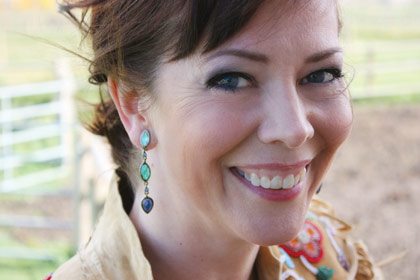
Shorten and Simplify GMO Conversations
Sometimes, talking to people away from the office about the work can be a challenge, especially when it comes to GMOs. Here are some tips to help you talk about what you do and why it’s important.
There are many questions that consumers and the general public have about seed and the role that biotechnology and genetically modified organisms play in the food system. Battling negative perceptions, and clearing up misconceptions, is an ongoing challenge for those in the seed industry.
For this reason, it’s not unreasonable to be reluctant to talk about what you do. Germination talks with communications experts to see what advice they have for helping you discuss what you do and why it’s important — in essence, how to have the GMO conversation.
Julie Borlaug, granddaughter of Green Revolution pioneer Norman Borlaug, spoke about A World without GMOs at the Ag Issues Forum, hosted by Bayer CropScience. Having the GMO conversation was one of the points in her speech; in Borlaug’s view, distilling the message down to a human level and being prepared are key to success.
Janice Person, director of social media, Monsanto.
“Our messaging has been wrong from the get go,” says Borlaug, who is associate director for external relations at the Norman Borlaug Institute for International Agriculture. “We’ve taken our arguments for the benefits of all this, but we’ve done it in a scientific approach and … no one outside of ag understands what we are talking about. “We need to get more human stories about the benefits and bring it down a level.”
For example, Borlaug says when talking with friends that are moms, she shares the benefits of plant technology to the citrus industry, specifically Florida oranges. “Without it, the price for orange juice will skyrocket and might even become scarce due to disease pressure,” she says.
Having travelled the world, she also talks about the ability to make staple foods, such as rice, more nutritious by adding micronutrients. “On other continents, this technology can be the difference between living and dying,” she says.
What will you talk about? “Your message needs to be a 90-second elevator pitch,” she says. “If you in 90 seconds can’t tell someone the benefits of GMOs, then we have a problem.”
Camille Ryan, professional affiliate with the College of Agriculture and Bioresources, University of Saskatchewan.
Camille Ryan couldn’t agree more. “The only thing that I would add is that 90-second pitch has to be your story; it has to be personal,” says the outspoken science and agriculture advocate who blogs regularly about food production. “It doesn’t mean that you’re not bringing in those facts, but it has to come from you, and it has be authentic.”
Ryan who is a professional affiliate with the College of Agriculture and Bioresources at the University of Saskatchewan explains that the first step in having a successful GMO discussion is recognizing that what you say isn’t nearly as significant as how you say it. “How to communicate is way more important than the actual message you want to send out,” Ryan says. “The general public is not interested in facts or packaged information. They’re looking for a story, they’re looking for connection, they’re looking for something that appeals to their values.
“The statement of ‘we’re going to feed the world’ — people aren’t buying that anymore. They want something else, and that’s where the human-to-human connection matters.”
Janice Person is the director of social media at Monsanto. She shares Ryan’s view when it comes to packaged information. “I have to say, canned messages don’t work too well — they sound canned,” Person says. “But when we talk about how we personally have the confidence in the products so that we feel comfortable serving biotech products to our children or how we personally have seen the positive impact on the environment, those experiences have real power for others.”
Ryan agrees that it’s important for those who work in the industry to relate what technology means to them. “If you just start repeating other messages, it’s no longer authentic,” she says. “Come up with a way of conveying information in a manner that’s almost like a story. We can find common ground person-to-person all the time. It doesn’t necessarily have to start with agriculture or technology. It can start with other things like your kids both play hockey or you go to the same church. That’s where real connections are made.
“Yes, you have to be accurate in providing your information but the information doesn’t need to be the first thing out the door,” Ryan adds. “You have to lead with that human-to-human connection … because if the face-to-face fails, then the facts won’t matter at all.”
Fran Castle, Global Brand and Media Communications senior manager, BASF Plant Science.
Relate Through Common Values
For more casual conversations with family and friends, Fran Castle, BASF plant science global brand and media communications senior manager, encourages those in the seed industry to not only talk about the benefits of the technology but to also understand the arguments communicated by those who oppose GMOs. This past year, the seed industry launched GMO Answers so that it could do a better job of answering questions about GMOs from the public. It is an initiative committed to responding to any question people have about how their food is grown.
If seed industry employees are given more tools to be able to handle these kinds of discussions outside of the workplace, Castle thinks they will be much more satisfied with their jobs.
Both Ryan and Person stress the importance of keeping one’s head in GMO discussions. “For those of us engaged in biotechnology, we see how polarized the conversation has become and it can be intimidating to find ways to enter the conversation. We also find ourselves heavily rooted in data and information and seeing the emotions expressed are so different than the knowledge we have, it is hard to wade into. Hard, but it can be done respectfully and that’s why talking through this is so critical,” Person says.
Mark Halsall
















